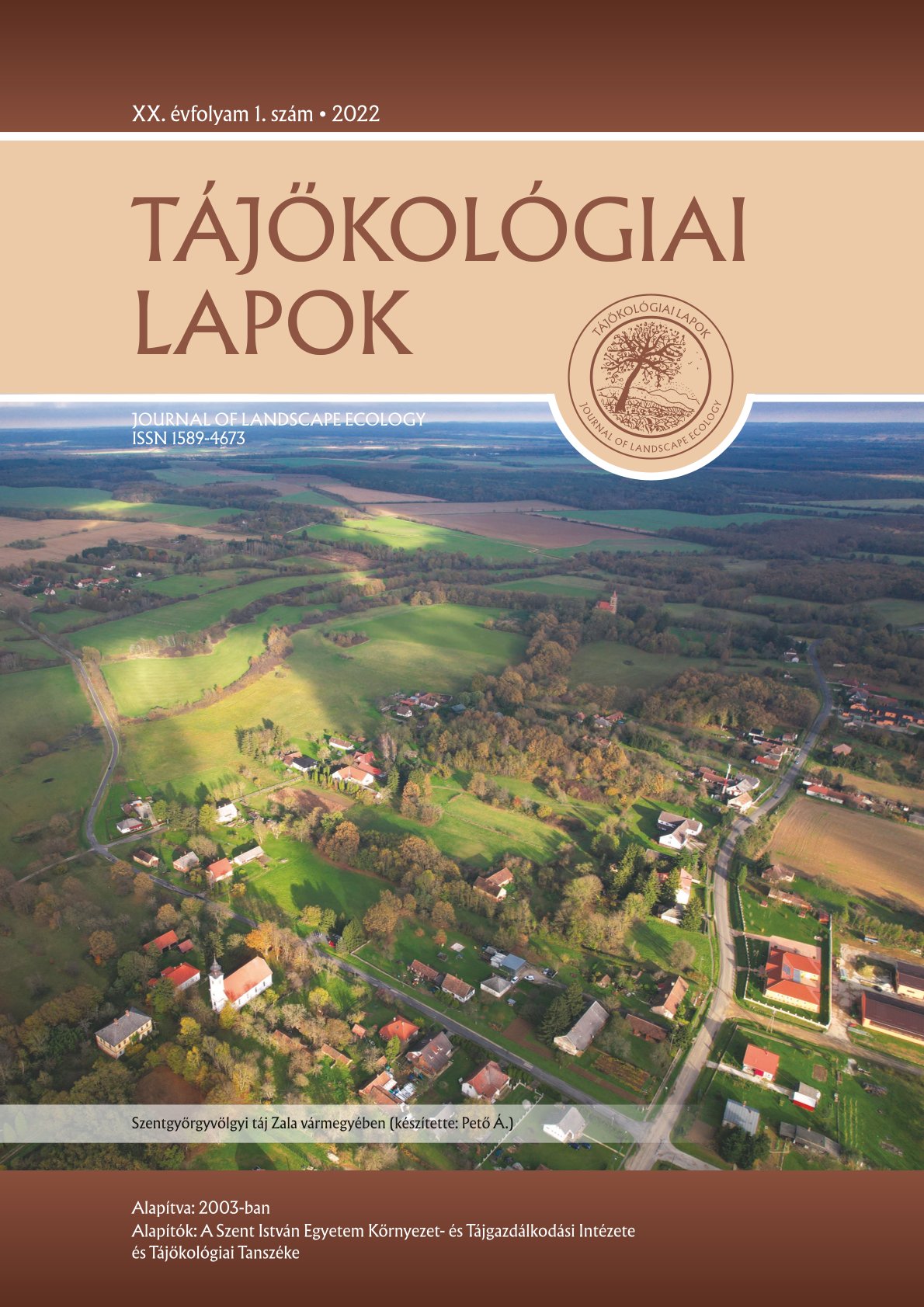Mitigating urban heat Island effects with increased evaporation
DOI:
https://doi.org/10.56617/tl.3369Keywords:
urban heat island, climatic energy balance, evaporation, evapotranspiration, active shadeAbstract
Heat stress of the natural enviroment as well as of the urban environment is increasing with climate change and global warming. The urban heat island effect is emerging in densely built up areas. We are approaching the problem of heat islands by focusing on the root causes and dealing less with the consequences. The significant role of the heat properties is at the center of our attention: the warming up of water and concrete surfaces with the same amount of energy. Concrete surfaces gets 5 times warmer within heat islands. Even more important is the evaporation of water.The process requires twice as much energy in the transformation. Analysing a precipitation event in summer we demonstrate the outstanding heat properties of water and its irreplacable role in the energy distribution process. We suggest to refine terminology and introduce terms ’passive shielding’ (where we cast a shadow e.g. by a canvas) and ’active shielding’ differentiating a case where vegetation provides the shade accompanied by evapotranspiration with cooling effect. These terms can help to promote the importance of green walls and roofs, arbors, parks, and contribute to increase the size of green areas. The objective of this paper is to call attention to the need of a balanced hydrological cycle, as well as to our responsibility to preserve or restore its smooth operation. It is a prerequisit for sustainability both in urban and in rural areas alike.
References
Almási B., Csizmadia D. 2016: Zöldinfrastruktúra Füzetek 1.: Vízáteresztő burkolatok. Budapesti Fővárosi Főpolgármesteri Hivatal, Budapest. p. 11.
Bartholy J., Mészáros R., Geresdi I., Matyasovszky I., Pongrácz R., Weidinger T. 2013: Meteorológiai alapismeretek. ELTE Természettudományi Kar, Budapest. p. 259.
Báder L. 2020: „Táji hőszigetek” és hatásuk az éghajlati energia- és vízmérlegre. Tájökológiai Lapok 18(2): 87–96.
Bíró T. (szerk.) 2019: Országos települési csapadékvíz-gazdálkodási konferencia – Tanulmányai. Dialóg Campus Kiadó, Budapest. p. 308.
Csizmadia D. 2018: Zöldinfrastruktúra Füzetek 3.: Vízérzékeny tervezés a városi szabadtereken. Budapesti Fővárosi Főpolgármesteri Hivatal, Budapest. p. 90.
Eiseltová, M., Pokorny,, J., Hesslerová, P., Ripl, W., 2012: Evapotranspiration – A driving force in landscape sustainability. In: Irmak, A. (ed.): Evapotranspiration - Remote sensing and modeling, Intech, Rijeka, Croatia. pp. 305–328. DOI: https://doi.org/10.5772/19441
Gribovszki Z. 2004: Evapotranspiráció hatása a lefolyás napi ritmusára erdősült kisvízgyűjtőkön. In: Mátyás Cs., Vígh P. (szerk.): Erdő és Klíma IV. Nyugat-magyaroszági Egyetem, Sopron. pp. 171–183.
Gyulai M. G. 2016: Budapesti városi hősziget-hatás termovíziós vizsgálata. TDK-dolgozat. BME Építőmérnöki Kar, Építőanyagok és Magasépítés Tanszék, Budapest. p. 41. https://tdk.bme.hu/EMK/DownloadPaper/Budapesti-varosi-hoszigethatas-termovizios
Hurina, H., Pokorný, J. 2016: The role of water and vegetation in the distribution of solar energy and local climate: a review. Folia Geobotanica 51: 191–208. DOI : https://doi.org/10.1007/s12224-016-9261-0
L’Ecuyer, T., Beaudoing, H.K., Rodell, M., Olson, W., Lin, B., Kato, S., Clayson, C.A., Wood, E., Sheffield, J., Adler, R., Huffman, G., Bosilovich, M., Gu, G., Robertson, F., Houser, P.R., Chambers, D., Famiglietti, J.S., Fetzer, E., Liu, W.T., Gao, X., Schlosser, C.A., Clark, E., Lettenmaier, D.P., Hilburn, K. 2015: The observed state of the energy budget in the early twenty-first century. Journal of Climate 28(21): 8319–8346. DOI: https://doi.org/10.1175/JCLI-D-14-00556.1
Pokorny, J., Hesslerová, P., Hurina, H., Harper, D., 2016: Indirect and direct thermodynamic effects of wetland ecosystems on climate. In Vymazdal, J. (ed.): Natural and constructed wetlands. Springer, Cham. pp.91–108. DOI: https://doi.org/10.1007/978-3-319-38927-1_7
Unger J., Gál T. 2017: A városi hősziget jelenségköre és modellezési lehetőségei. 43. Meteorológiai Tudományos Napok, 2017. november 23-24., ppt előadás. p. 24. http://acta.bibl.u-szeg¬¬ed.hu/43749/1/ft_001_091-098.pdf
Unger J., Sümeghy Z. 2012: Környezeti klimatológia. JATEPress, Szeged. p. 222.
Ungvári, G., Kis, A. 2019: A macroeconomics-inspired interpretation of the terrestrial water cycle. WIREs Water 2019(6): e1380. DOI: https://doi.org/10.1002/wat2.1380
http1: https://www.ksh.hu/stadat_files/nep/hu/nep0037.html (KSH 2020)
http2: https://masfelfok.hu/2021/08/24/mar-majusban-40-celsius-fok-lehet-budapest-belvarosaban-a-felszini-homerseklet (Pongrácz R. 2021)
http3: http://www.eltereader.hu/media/2014/05/Meteorologiai_alapismeretek_READER.pdf (Bartholy et al. 2013)
http4: https://www.muszeroldal.hu/assistance/hotani.htm
http5: http://www.atomeromu.hu/hu/rolunk/technika/HogyMukodik/Lapok/default.aspx (Paksi Atomerőmű 2020):
http6: https://budapest.hu/Documents/varosfejlesztesi_koncepcio_bp2030/Budapest_2030_ varosfejlesztesi_koncepcio.pdf (2011 I. kötet)
http7: yceo.users.earthengine.app/view/uhimap (Earth Engine Apps)
http8: https://epiteszforum.hu/hogyan-vedekezzunk-a-klimavaltozas-okozta-fokozodo-hosziget-hatas-ellen (Kamondy T. 2019)
http9: https://odp.met.hu/climate/observations_hungary (OMSZ 2021)
http10: http://ttktamop.elte.hu/online-tananyagok/alkalmazott_es_varosklimatologia (Pongrácz R., Bartholy J. 2013): Alkalmazott és városklimatológia)
http10: http://kotivizig.hu/index.php?option=com_content&view=article&id=1091:negativ-rekord-koezeleben-a-tisza&catid=44:hidrometeorologiai-elemzesek&Itemid=65 (Kötivizig, 2015)
http11: https://www.vizugy.hu/?mapModule=OpGrafikon&AllomasVOA=16496059-97AB-11D4-BB62-00508BA24287&mapData=Idosor (OVF,2022)
Downloads
Published
Issue
Section
License
Copyright (c) 2022 Báder László, Ungvári Gábor

This work is licensed under a Creative Commons Attribution-NonCommercial-NoDerivatives 4.0 International License.
A folyóirat Open Access (Gold). Cikkeire a Creative Commons 4.0 standard licenc alábbi típusa vonatkozik: CC-BY-NC-ND-4.0. Ennek értelmében a mű szabadon másolható, terjeszthető, bemutatható és előadható, azonban nem használható fel kereskedelmi célokra (NC), továbbá nem módosítható és nem készíthető belőle átdolgozás, származékos mű (ND). A licenc alapján a szerző vagy a jogosult által meghatározott módon fel kell tüntetni a szerző nevét és a szerzői mű címét (BY).












